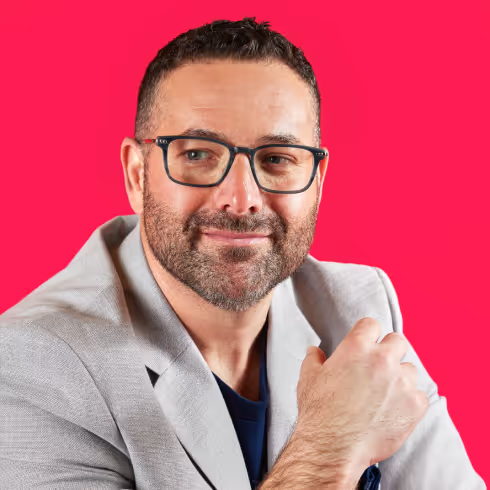Breaking barriers: CareAR’s vision for accessible augmented reality


CareAR's augmented reality (AR) tools are transforming industries and proving that waiting for innovation means missing out on game-changing opportunities. On this episode of Catalyst, Clinton chats with CareAR’s VP of Partnerships, Kamran Khan, about the company’s approach to value, the power of technology partnerships, and the future of this incredible technology.
Who is CareAR?
CareAR provides enhanced augmented reality tools with live visual AR interactions, instructions, and intelligence in order to drive game-changing operational efficiencies, customer outcomes and enhanced safety. In 2021, the company was acquired by its former client Xerox, who employed its platform to support the installation and maintenance of its network of print machines and overcome the skills shortage. Even post acquisition, CareAR remains a valuable tool for Xerox, with approximately 8,500 field engineers using the platform as well as Xerox’s frontline service desk. The platform is publicly available, and used by over 5,000 customers across industries and geographies.
If you wait, you’re late
We may know Xerox as a printer company, but they’ve been on the cutting edge of tech for a long time, and their acquisition of CareAR not only demonstrates their keen ability to anticipate shifts in the landscape, but also teaches a valuable lesson about proofs of concept. If you’re waiting for your peers or the rest of your industry to deploy and validate new technologies such as AR before you try them out, you're missing an opportunity to leapfrog ahead of your competition and enhance your capabilities.
Having partners that challenge and work with you to create value and validate concepts can help unearth and seize these opportunities. However, partnerships in the technology sector have historically followed the adage of “If you have to go fast, you go alone. If you have to go far, you go together.” But technology cannot exist on an island, and for effective proofs of concept and value delivery, enterprises and tech vendors need to work together to establish market fit.
CareAR’s approach to value
CareAR demonstrates proof of value through a systematic method called ‘two by two by two.’ The team takes two hours to understand the use case and make sure the metrics are there, spends two days validating and workshoping, then deploys it in a pilot for two weeks end to end and measures the output. The aim is not to verify whether the technology functions or not, but rather to assess its impact on the business. Did it reduce spend or dispatches? Did it improve customer success? What were the actual business metrics? If improvements are achieved, then it’s worthwhile to proceed. If not, it’s back to the drawing board to find another more viable use case.
Partners’ relationship with the product team
In enterprises, there’s often a tug of war over who gets to choose what gets built as each stakeholder group has differing priorities. But this is a positive tension to have. Partners and sales provide checks and controls that create valuable organizational structure while product teams make sure the business remains true to its vision. The key to success here is to keep the feedback loop open. Product teams should not operate in isolation, and should regularly interact with partners and other stakeholder groups to ensure everyone remains in lockstep.
Make way for new ideas
Often, collaboration between partners, product teams, and other stakeholder groups will yield new use cases you might not have initially thought of. This is certainly the case for CareAR, whose network of clients have come up with new ways of using the platform that has allowed the company to improve, build internal compliance, and expand its value for other clients. This is a great reminder of a key point from last week’s episode: products and platforms are greater than the sum of its parts, and made better by different groups coming together to share ideas and validate concepts.
The future of AR
To help facilitate this growth, CareAR is dedicated to the democratization of AR technology. They have introduced no code solutions that make it possible to create AR workflows with simple drag and drop. The company is also trying to reduce the barrier to training AR models and is using AI and machine vision to identify shapes and predict next steps.
As always, don’t forget to subscribe to Catalyst wherever you get your podcasts. We release a new episode every Tuesday, jam-packed with expert advice and actionable insights for creating digital experiences that move millions.





